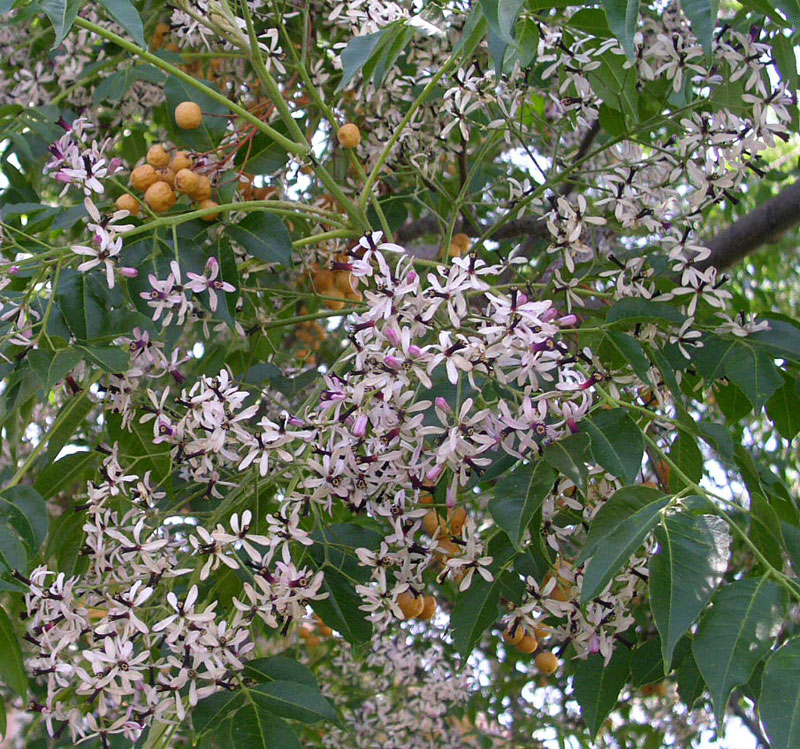Syringa (Melia azedarach)
The Seringa tree is a very well-known, large (25m), deciduous tree with smooth reddish-brown bark that becomes smothered in highly scented purple-mauve flowers in spring. The flowers are followed by clusters of green berries that turn yellow and wrinkle as they ripen.
The leaves, bark, flowers and ripe fruits are poisonous to most animals, however some birds eat the fruit.
